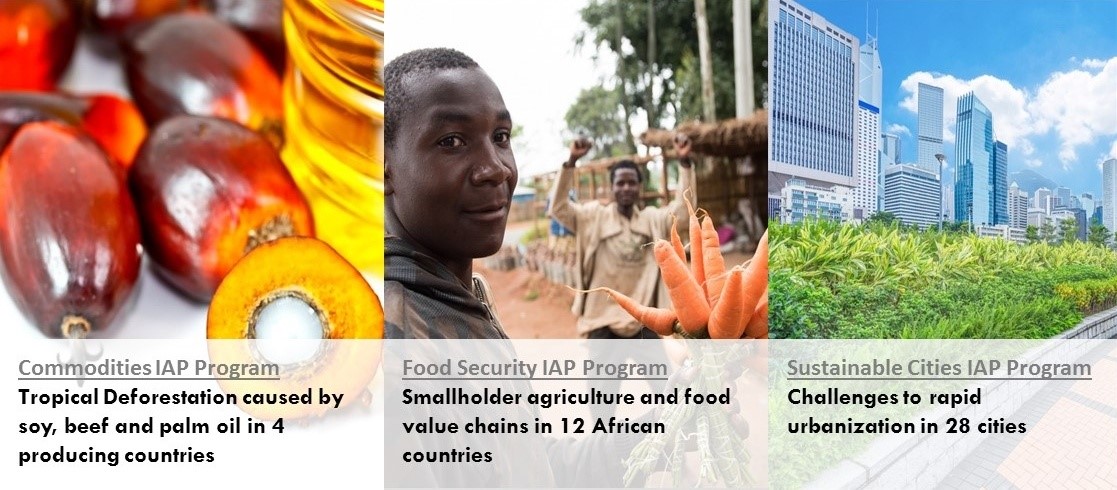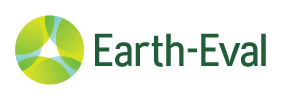Formative review of the integrated approach pilot (IAP) programs - Part 2
As part of the GEF-6 replenishment phase, the Global Environment Facility (GEF) introduced three integrated approach pilot (IAP) programs. These programs aim to address global environmental issues more holistically.

The Independent Evaluation Office (IEO) of the GEF was tasked to review these programs. Given that many of the child projects under these programs have yet to commence implementation at the time of evaluation, the review adopted a formative approach and focused on process and design aspects at start-up, their uptake by key stakeholders in the target countries and the process through which these three IAP programs have been and are being launched. The Council document of the Formative Review of the Integrated Approach Pilot (IAP) Programs can be downloaded here.
Findings are organized under four main themes: relevance, design, process and cross-cutting issues. In the first blog post I discussed the findings on relevance and design. In this second part of the blog post, I'll discuss the findings on process, cross-cutting issues and will be looking ahead.
FINDINGS - Process
- It took 26 months to get all child projects approved, from the moment of approval of the overarching programs, and much of the work in the design of the projects and programs is front-loaded.The three programs are new and complex; they are multifocal area, multi-country and multi-GEF Agency endeavors, aiming to tackle complex environmental issues. In addition, they all share another multidimension, the multiple scales: the ambition to work at local, landscape, national and regional levels. To impart a comprehensive understanding of their intended scope and impact took an additional up-front effort for outreach and education with countries.
- Approaches for country selection varied across the three IAPs.For the Commodities and Food Security IAP programs the selection of countries was based on sound criteria, but communication during the selection process was poor. In case of the Sustainable Cities IAP, the country selection process occurred via informal consultations between main stakeholders at design. Involved stakeholders agreed that the GEF Secretariat led critical decisions on which countries/cities to include in the programs.
- There has been some competition for the lead agency position, and the role of the consultations in the lead agency selection process was not always clear. This was the case both for the Food Security and Sustainable Cities IAPs, but the agencies selected do have the comparative advantages needed for the lead role.
- The three IAPs draw on the comparative strengths of several agencies and other experienced think tanks. The three IAP programs are characterized by a large number of GEF Agencies and executing partners. All of them are generally individually well qualified, but their number increases the multitude of institutional preferences, and requires greater planning and coordination.
- Set-aside funds provided incentives for countries to commit STAR resources to the program, however, most of the financial resources to the IAP programs were already committed. GEF grants are complementary to other financial resources, most of which were already allocated to their intended purposes of food security improvements, integrated natural resource management, or urban infrastructure provision. This indicates that a good part of the IAP interventions would have taken place even without the GEF, but efforts are now more integrated, with a strong emphasis on adaptive management, learning and knowledge exchange.
FINDINGS - Cross-cutting issues
- Gender has been considered in most child projects, and more than half have a gender mainstreaming strategy or plan in place. The three programs score well on gender in terms of gender analysis at design, gender strategy and gender indicators.
- Resilience considerations have been embedded in the IAP programs. The only exception is the Food Security IAP, which aimed to pilot a GEF-specific resilience assessment tool, but hasn't succeeded in integrating the tool - or any other resilience assessment tool - across all projects.
CONCLUSIONS
The formative review's findings led to four conclusions, two of which were discussed in the first part of this blog post, and the remaining two conclusions relate to process:
- Conclusion 3: The three programs draw on comparative advantages of a variety of GEF Agencies and specialized think tanks, but the involvement of several agencies and institutions in each IAP programs has added to their organizational complexity.
- Conclusion 4: While in general a positive picture emergences from this review on the programs' design and launch process, both were affected by insufficient clarity in terms of rules of engagement between agencies, transparency of selection processes, clarity on the role of the Secretariat, and insufficient communications between some participating GEF Agencies and countries on technical design.
LOOKING AHEAD
The integrated approach pilot programs have recently been launched and will need time to demonstrate results. In the interests of adaptive management, the following broad recommendations have been proposed by the formative review:
Assess the value addition of the knowledge platforms in a mid-term review to ensure they generate the necessary traction and provide overall support to program implementation.
For many interviewed stakeholders, the most important innovative feature of the programs are the hub project-supported knowledge platforms. The platforms are viewed as a forum for learning about innovations, exchange ideas and to showcase child projects. The knowledge platforms will require a strong commitment and support by all participating entities to provide the services and benefits they have been designed for. Their contribution towards overall program objectives should be assessed, to ensure they generate the envisioned additionality and support to program implementation.
Standardize the indicators, tracking tools and metrics across the IAP programs to demonstrate their additionality through monitoring and evaluation (M&E).
Indicators, tracking tools and metrics should be made uniform to enable aggregation within each program and for the three IAP programs altogether. This is to be done as a matter of urgency, to address the crucial need to clearly demonstrate the additionality brought by these pilot initiatives.
Assess the role of global environmental benefit (GEB) targets, clarifying whether and when they are meant as aspirational goals, or as hard targets, and how aspirational GEB goals will be measured at the program level.
A mid-term review of the programs should take place to assess issues of additionality, effectiveness and efficiency at the mid-term mark of the IAP programs. Given a lack of clarity as to whether GEB targets are aspirational or hard targets, the review should clarify the role of targets, and explain how the GEF aims to assess aspirational goals at the program level.
Some Resources:
- IEO, Draft Final Report of the Sixth Comprehensive Evaluation of the GEF (OPS6) , October 2017. Council Document GEF/ME/C.53/Inf.01.
- IEO, Evaluation of the Programmatic Approaches in the GEF , May 2017. Council Document GEF/ME/C.52/Inf.01/Rev.01.
- IEO, Formative review of the integrated approach pilot (IAP) programs , November 2017. Council Document GEF/ME/C.53/Inf.04.
- IEO, Semi-Annual Evaluation Report of the Independent Evaluation Office , November 2017. Council Document GEF/ME/C.53/01.
- GEF, PFD document of Cities-IAP: Sustainable Cities Integrated Approach Pilot (IAP-PROGRAM) , GEF ID 9077, April 2015.
- GEF, PFD document of Food Security-IAP: Sustainability and Resilience for Food Security in Sub-Saharan Africa Integrated Approach Pilot (IAP-PROGRAM) , GEF ID 9070, May 2015.
- GEF, PFD document of Commodities-IAP: Taking Deforestation out of Commodity Supply Chains Integrated Approach Pilot (IAP-PROGRAM) , GEF ID 9072, April 2015.



